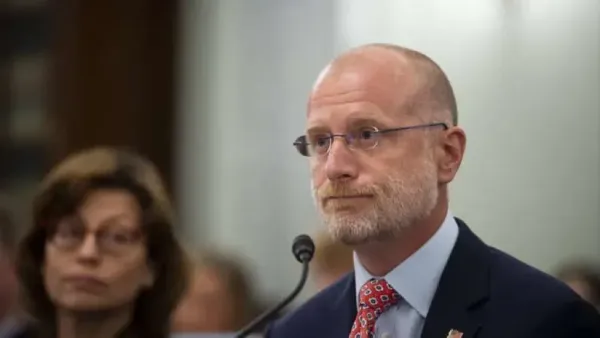Jeremy Jurick and Paul Schneid: Preparing Data for the FCC’s Broadband Filing
The new FCC requirements in the broadband data collection program are important to meet the nation’s connectivity goals.
Broadband Breakfast

The recent emphasis on the expansion of broadband access across the country, coupled with the requirements of the Infrastructure Investment and Jobs Act and Broadband Equity and Deployment program, has prompted the Federal Communications Commission to review and update its collection of data. Accurate data pinpointing where broadband service is – and is not – available is critically important. Broadband maps are used by Internet Service Providers and governments to identify locations that need service, as well as how to fund broadband expansion.
The FCC has recently established an important initiative called the Broadband Data Collection Program to ensure the collection of accurate, vital broadband availability data, implementing new requirements. Among other requirements of the BDC, ISPs must submit their serviceable location data and align that data with the FCC’s serviceable location fabric, which will require new methodologies from ISPs, resulting in additional hours spent and more resources allocated to address this upcoming task.
At Michael Baker International, our team is at the forefront of data collection and broadband expansion services. This article provides details on the requirement and filing process for ISPs.
Recognizing the challenges
The BDC filing process may be unfamiliar and challenging to some service providers due to the novelty of the program and the list of requirements it encompasses. Moreover, ISPs may be delayed in the processing and submission of their data, either due to limited resources or bandwidth to support these new tasks and responsibilities or experience to immediately and effectively tackle and complete this complex data collection/submittal process. With the extent of the data expected to be collected and submitted, which involves technical elements and resources, proceeding may seem daunting. Sifting through newly published materials and resources takes away valuable time and issues can arise before or after submittal with incomplete data or the ability to process the data into the appropriate standards, recently specified for fabric comparison by the FCC.
Getting started according to the timeline
To begin the BDC Filing process, ISPs should first become familiar with the timeline, federal regulations and data requirements surrounding the submission period.
Due to be submitted for the first time on September 1, 2022, and semi-annually going forward, specific data must be provided by all facilities-based providers of fixed and mobile broadband internet access who had one or more end user connections in service on June 30, 2022. Each filing will be based on the same schedule as the Form 477 filings (June 30th through September 1st and December 31st through March 1st).
Fulfilling the prerequisites ad the data requirements
As prerequisite to filing data in the BDC portal, the FCC requires ISPs or government entities to first complete the registration process within the FCC’s Commission Registrations System (CORES). Users will be assigned a 10-digit FCC Registration Number that will be used for verification purposes by the FCC. Additionally, filers are also required by the FCC to show proof that they are indeed an organization that is responsible for tracking broadband coverage. Each filer must provide documentation from the highest-ranking executive within their company confirming that the organization tracks broadband data.
Each BDC filing must include detailed information about the filer, broadband availability data (including supporting data) and Form 477 broadband subscription data. In addition, specific requirements are mandated for various ISPs:
- Fixed wireline and satellite broadband service providers: Submit either polygon shapefiles or a list of locations constituting the provider’s service area.
- Fixed wireless broadband service providers: Submit either propagation maps and propagation model details or a list of locations constituting the provider’s service area.
- Mobile wireless broadband service providers: Submit propagation maps and propagation model details for each network technology, as well as for both outdoor stationary and in-vehicle mobile network coverage. Additionally, these ISPs must submit data for their signal strength heat map.
Finalizing for submission
Finally, ISPs must gain access to the serviceable location fabric, format the data to requirements for accurate comparison against the fabric and identify the addresses that meet requirements of serviceable areas. When the necessary data has been compiled and reviewed, the filing entity must navigate to the BDC system and submit its data onward to the FCC. The FCC gives the option to file submit data as an upload/web-based file or alternatively submit using an Application Programming Interface.
Partnering with a broadband expert
It is recommended that ISPs looking to both save time and ensure accuracy throughout the submission process partner with broadband experts that will ensure that all BDC requirements are met before submitting any data. Michael Baker International has thoroughly researched the BDC requirements and created a streamlined solution. ISPs simply provide the initial information, and our team then determines the appropriate data to be submitted, along with our translation of that data into the proper format. Once ISPs receive the data, they need only create a login and finally, upload the submission data.
Today, there is increased focus on an existing but growing need to close gaps in the digital divide. The new FCC requirements in the BDC program are an important part of ensuring the nation’s connectivity goals are met by collecting accurate data that will be necessary to provide services where they are most needed.
Jeremy Jurick is Michael Baker’s National Broadband Services Director and oversees Michael Baker International’s broadband planning, mapping and program management initiatives. His broadband experience includes roadmap development, planning, data collection and analysis, stakeholder engagement, broadband provider engagement, branding, multimedia design, GIS services, and software design, and he has provided testimony during several government hearings to inform policymakers on broadband policy and expansion, including advocating for high speed thresholds for the definition of broadband and allowing government entities to be eligible subgrantees for broadband funding.
Paul Schneid is a program manager at Michael Baker with nearly a decade of experience in broadband wireless equipment operation, customer service, and process improvement. Most recently, Schneid interfaced with vendors and clients to manage all implementation project phases from inception to completion across a citywide wireless broadband expansion in New York City. This piece is exclusive to Broadband Breakfast.
Broadband Breakfast accepts commentary from informed observers of the broadband scene. Please send pieces to commentary@breakfast.media. The views expressed in Expert Opinion pieces do not necessarily reflect the views of Broadband Breakfast and Breakfast Media LLC.











Member discussion